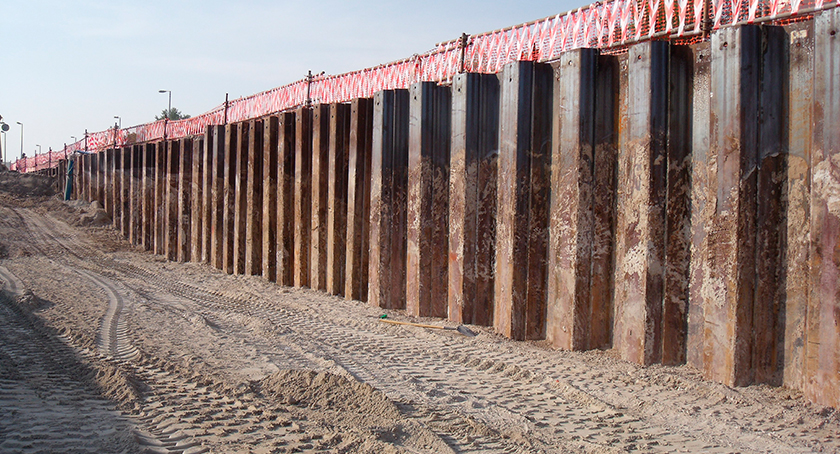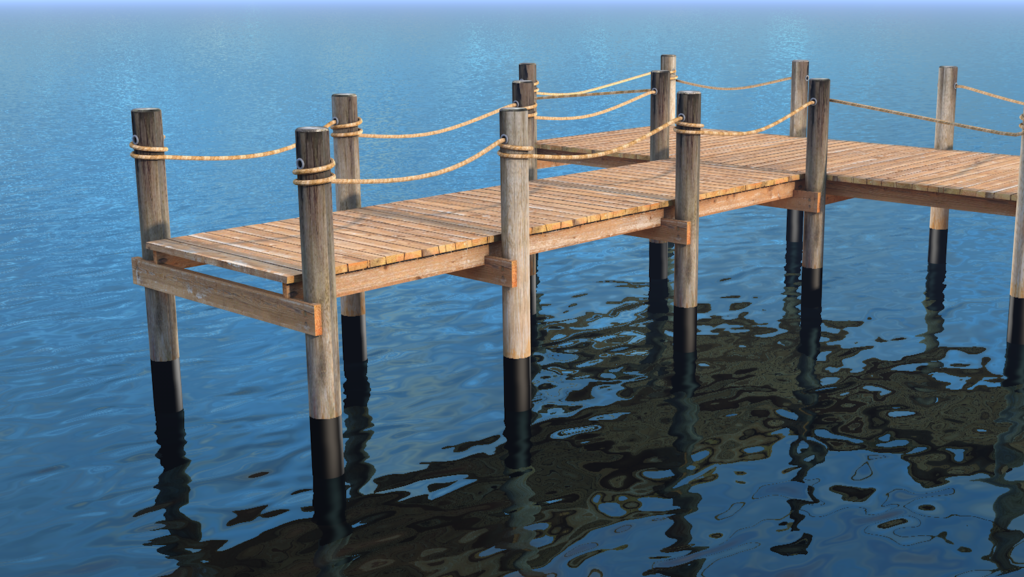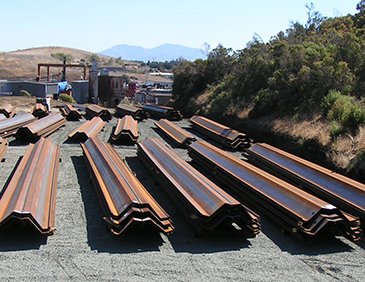Sheet Piling – Its 3 Different Types and Advantages
The sheet piling walls are used for large and small Waterfront structures, ranging from the small pleasure of boat facilities to massive dock structures where sea-going boats can take on or unload cargo.
The pier of jutting into the harbor, consisting of two rows of sheet pining, makes a space between that it’s filled with paved and earth is same construction.
The pilling of sheets is also used for erosion beach protection; for stabilized the ground slop and particularly for roads; and shoring walls of trenches and excavations; and for cofferdam.

When the height of the wall is under about 3 m, it’s often cantilevered; however, it’s generally anchored uses one or more than one anchor for colossal wall height.
Its results the wall is termed an anchored sheet-piles wall or anchored bulkhead.
Sheet pile wall types
- Wooden sheet piles
- Wakefield sheet piles
- Steel sheet piles
Wooden Pilining

These types of sheet piles are made in various sizes and forms.
And the natures of site conditions determine the choice of the particular type.
If the water tightness is needed to a reasonable extent, lapped sheet is used.
In this condition, every pile comprises two planks, either spiked or bolted to one another.
If the only earthen banks of small in height that’s rare to be supported, a single or double row of planks and it’s appropriately erected will perform the function of sheet piling.
If the tightness of water is completed, desire or pressure of the retained material Wakefield or tongue and grooved sheeting is used.
To facilitate the driving of piles, they are generally beveled at the foot.
It not only assists in driving but also prevents bruising if the encounter of piles is complex with started material.
Wakefield piles

Wakefield type of piles is made with three planks, 5cm, 8cm, and 10cm in thickness.
And these planks are nailed together, and the middle plank offset, forming a tongue on one of the edges and the groove on the other.
Planks connect by using the pair of staggered bolts at 80cm center to center at the intermediate point.
The lap of triple piles proved more vital in the drive.
And it does not waste in forming the tongue and groove joints, and the piles have decreased the tendency to warp. The timber sheets pile has a low weight, and such as the equipment required for pile driving is down also.
It’s considered to be an essential benefit timber pile has over piles of other materials.
Steel Sheet Piles

This sheet pile is rolled with a steel section of a plate called the web with integral interlocks on each edge.
Interlocks are consisting of a groove, one of whose legs are suitably flattened.
And this forms of flattening tongue which fits into the groove of the second sheet.
Types of steel sheet piles
- Larsen shape
- z-type shapes
- straight web sections
The construction method of sheet pile walls
The construction method of sheet plies walls, sheet piles are driven into the ground and after this backfill place on the land side and the first sheet piles may be moved into the soil and foundation in front of the sheet piles dredged.
In other situations, the soil used for backfill behind the sheet pile walls is generally granular.
The soil below the dredge lines may be clary or sandy.
The surface of the soil on the waterside refers to the mud linen or dredge line.
Method of construction is divided into two categories.
- Dredged structure
- Backfilled structure
And the construction sequence for backfilled structure as follows;
Situ soil in front in dragged and behind of the proposed structure
And the drive the sheet piles.
The level of the anchor backfilled up and placed the system of the anchor.
and backfill up to the height of the wall
For a cantilever type of wall, only apply Steps 1, 2, and 4, .and the construction of sequence for the dredged structure is as follows:
First of all, driven the sheet piles.
Placed the anchor system and backfilled up to the level of anchor
Then backfill up to the height of the wall.
Now dredge the front side of the wall.
Advantages
- Steel sheet piling is very general because of several advantages over other materials.
- It provides vast resistance to drive the stress.
- Low weight
- It can be reused on several projects.
- It’s effortless to adapt the pile length by either bolting and welding.
- And the joints are less apt to deform during driving.
Disadvantages
- The section can relay be uses as the part of the permanent structure.
- It isn’t easy to install the sheet piles in soil with cobbles. Boulders the desired wall depths maybe not reached
- The shapes of excavation are dictated by the section of sheet piles and interlocking elements.
- The sheet piles are driven may cause neighborhood disturbance.
- The adjustment in properties settlement may take place due to the installation of vibration.
